Advancements in Chemical Materials: Transforming the Coatings Industry
- Addtime: 2025-04-08 / View: 686
The coatings industry is at the forefront of innovation, driven by the dual imperatives of sustainability and performance enhancement. As environmental regulations tighten and consumer demand for eco-friendly products grows, chemical materials are playing a pivotal role in redefining how coatings are designed, applied, and utilized. This article explores groundbreaking advancements in chemical materials that are revolutionizing the coatings sector, from antimicrobial solutions to self-cleaning surfaces and energy-efficient applications.
● Sustainability as a Driver of Innovation
The coatings industry is under increasing pressure to reduce its environmental footprint. Traditional coatings often rely on volatile organic compounds (VOCs), which contribute to air pollution and pose health risks. To address these concerns, manufacturers are turning to sustainable alternatives:
1. Low-VOC and Zero-VOC Formulations
Water-based coatings have become mainstream, offering reduced VOC emissions and improved indoor air quality. These formulations are now used in architectural paints, industrial coatings, and even automotive finishes. Companies like Sherwin-Williams and PPG are leading the charge, with products that combine performance with environmental responsibility.
2. Bio-Based Resins and Additives
Bio-based materials derived from renewable resources, such as soybean oil, linseed oil, and corn starch, are replacing petroleum-based resins. These materials reduce reliance on fossil fuels and lower carbon footprints. For example, BASF has developed Infiny, a bio-based binder for exterior coatings that enhances durability while minimizing environmental impact.
3. Recycled Materials in Coatings
Manufacturers are incorporating recycled pigments, fillers, and solvents into their formulations. Recycled glass, metal oxides, and even post-consumer plastic waste are being repurposed into high-performance coatings. This approach supports circular economy initiatives and reduces waste.
● Smart Coatings: Beyond Aesthetics and Protection
The integration of nanotechnology and advanced chemistry is enabling coatings to perform functions beyond traditional protection and decoration. These "smart coatings" are transforming industries from construction to healthcare:
1. Antimicrobial Coatings
Antimicrobial coatings are gaining traction in healthcare, food processing, and public transportation. These coatings incorporate silver ions, copper, or zinc nanoparticles, which inhibit bacterial growth. CopperTouch, a UK-based company, has developed copper-infused coatings that kill 99.9% of bacteria within two hours, making them ideal for high-touch surfaces like door handles and countertops.
2. Self-Cleaning Coatings
Inspired by the lotus leaf’s natural water-repellent properties, superhydrophobic coatings are designed to shed dirt and water effortlessly. These coatings use titanium dioxide nanoparticles or fluorinated polymers to create surfaces that clean themselves. Pilkington Activ, a self-cleaning glass coating, reduces maintenance costs for buildings by breaking down organic dirt when exposed to UV light.
3. Thermal and UV-Protective Coatings
Coatings that reflect heat and block UV radiation are increasingly used in building exteriors and automotive applications. CoolRoof, a California-based company, offers reflective coatings that reduce energy consumption by lowering indoor temperatures. These coatings are particularly valuable in regions with extreme heat, such as the southwestern United States and parts of Asia.
● Graphene and Nanotechnology: Enhancing Performance
Graphene, the world’s strongest and thinnest material, is revolutionizing coatings by offering unparalleled durability and conductivity.
1. Graphene-Enhanced Coatings
Graphene-based coatings provide exceptional barrier properties, preventing corrosion and water ingress. Graphenstone, a Spanish manufacturer, produces eco-friendly lime-based coatings infused with graphene, which are used in historic building restoration and modern architecture. These coatings are breathable, mold-resistant, and carbon-negative.
2. Nanocomposite Coatings
Nanocomposite coatings combine nanoparticles like silica or carbon nanotubes with traditional resins to enhance scratch resistance, flexibility, and adhesion. These coatings are ideal for high-wear applications such as automotive finishes and industrial equipment.
● Energy-Efficient and Adaptive Coatings
Coatings are no longer static; they can now adapt to environmental conditions and contribute to energy efficiency.
1. Thermochromic Coatings
Thermochromic coatings change color with temperature, helping regulate building temperatures. For example, dark-colored coatings can turn lighter in hot weather to reflect sunlight, reducing cooling costs.
2. Solar-Absorbing Coatings
Solar-absorbing coatings convert sunlight into heat, enhancing energy efficiency in solar water heaters and building façades. These coatings are particularly effective in cold climates, where they can reduce heating demands.
● Case Study: AkzoNobel’s Sustainable Innovation
AkzoNobel, a global leader in paints and coatings, is pioneering sustainable solutions through its “People. Planet. Paint.”strategy. The company’s Interpon D1033 powder coating is used in the construction of Apple’s Park headquarters, offering a durable, low-VOC finish. AkzoNobel’s BioCirle program recycles paint waste into new coatings, reducing raw material usage by 30%.
● Challenges and the Path Forward
The transition to sustainable coatings is not without hurdles. High costs of bio-based materials and advanced technologies can be prohibitive for smaller manufacturers. Additionally, strict regulations and varying global standards complicate compliance. However, collaboration across the value chain—between chemical suppliers, coating formulators, and end-users—can drive innovation and reduce costs.
● Conclusion
The coatings industry is at a critical juncture, where sustainability and performance are no longer competing priorities but complementary goals. From antimicrobial and self-cleaning coatings to graphene-enhanced and energy-efficient solutions, chemical materials are enabling a new era of innovation. As consumer demand for eco-friendly products grows and regulations evolve, the industry must continue to embrace these advancements to create a more sustainable future. The coatings of tomorrow are not just protective—they’re intelligent, adaptive, and environmentally responsible.






